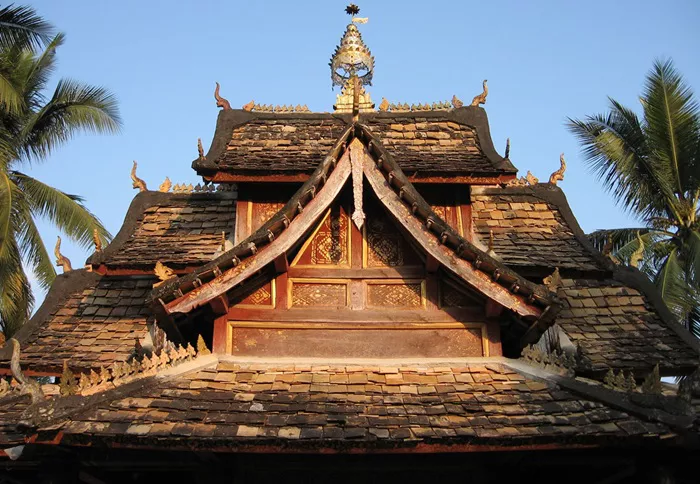Theravada Buddhism is one of the oldest and most prominent schools of Buddhism. It focuses on the teachings of the Buddha as preserved in the Pali Canon, the earliest collection of scriptures in Buddhism. One question that many people have is whether Theravada Buddhism includes nuns, and if so, what role they play within the tradition.
In this article, we will explore the role of women in Theravada Buddhism, particularly focusing on the presence of nuns. We will also look at the history, current status, and challenges that Theravada nuns face today.
The History of Women in Buddhism
To understand the role of nuns in Theravada Buddhism, it’s important to first look at the history of women in the Buddha’s teachings. In the early days of Buddhism, the Buddha himself established the Bhikkhuni Sangha, a community of female monks. This decision allowed women to practice the teachings of Buddhism and strive for enlightenment just like men.
Mahapajapati Gotami: The First Nun
The Buddha’s aunt, Mahapajapati Gotami, was the first woman to be ordained as a nun in the Buddhist tradition. She asked the Buddha for permission to join the monastic community, and after some hesitation, he agreed, but only under certain conditions. These conditions were laid out as the “Eight Garudhammas,” which are special rules for nuns that distinguish their status from that of male monks. These rules placed nuns in a subordinate position to male monks, but they still allowed women to participate in the monastic life.
The Bhikkhuni Sangha and Theravada Tradition
Theravada Buddhism, however, has had a complicated history with female monasticism. While the Bhikkhuni Sangha thrived for several centuries in early Buddhist history, it eventually declined. The decline occurred for a number of reasons, including the social and political circumstances in the regions where Theravada Buddhism was practiced.
The Decline of the Bhikkhuni Sangha
In countries like Sri Lanka, Burma (Myanmar), and Thailand, the Bhikkhuni Sangha gradually disappeared. The reasons for this are complex, but one of the primary factors was the lack of female teachers and the challenges faced by women who wanted to join the monastic community. For many centuries, there were no opportunities for women to be fully ordained as nuns in these countries.
Revival of the Bhikkhuni Sangha
In recent years, there has been a movement to revive the Bhikkhuni Sangha within Theravada Buddhism. This revival is part of a broader trend to recognize the important role that women can play in Buddhism. Many Buddhist communities around the world, especially in Sri Lanka, have worked to re-establish the Bhikkhuni Sangha, allowing women to receive full ordination as nuns.
Sri Lanka: The First Full Ordinations
In Sri Lanka, the first full ordinations of women as nuns took place in 1996. The ordinations were conducted under the leadership of Bhikkhuni Dhammananda, a prominent Sri Lankan nun. However, these ordinations were controversial, as they went against the traditional Theravada practices that did not allow female ordinations.
Despite the challenges, many people in the Theravada tradition believe that the re-establishment of the Bhikkhuni Sangha is an important step towards gender equality and the full participation of women in Buddhist practice.
The Role of Nuns in Theravada Buddhism
The role of nuns in Theravada Buddhism is still evolving. Traditionally, nuns were seen as subordinate to male monks. They followed many of the same practices, such as meditation, study of the scriptures, and teaching, but they also had their own distinct rules and regulations.
Nuns in Monastic Life
Today, nuns in Theravada Buddhism are involved in many aspects of monastic life. They study the teachings of the Buddha, meditate, and engage in community service. They also play an important role in teaching the Dhamma (Buddhist teachings) to laypeople, especially women, and in providing spiritual guidance to others.
In some countries, nuns also run their own monasteries and are responsible for maintaining the practice and discipline of the monastic community. They are also involved in the social and charitable activities of the Buddhist community, such as helping the poor, caring for the sick, and offering education to young people.
Promising Trends in Gender Equality
The revival of the Bhikkhuni Sangha is not just about giving women the opportunity to be ordained, but also about promoting gender equality within the Buddhist community. It is an effort to ensure that women have equal access to the spiritual teachings of the Buddha and can fully participate in the monastic life.
As the movement continues to grow, we can expect more and more women to be ordained as nuns and to take on important roles in Buddhist practice. These women will play a crucial role in preserving and spreading the teachings of the Buddha for future generations.
Conclusion
In conclusion, Theravada Buddhism does have nuns, but their role has evolved over time. Historically, female monasticism declined, but in recent years there has been a movement to revive the Bhikkhuni Sangha. Nuns in Theravada Buddhism play an important role in studying, teaching, and spreading the Dhamma, but they also face challenges, including lack of recognition and limited resources.
The future of Theravada nuns looks bright, with growing efforts to support and empower women in Buddhism. The revival of the Bhikkhuni Sangha represents an important step towards gender equality in the Buddhist monastic community, allowing women to fully participate in the practice and teachings of the Buddha.

